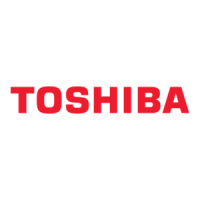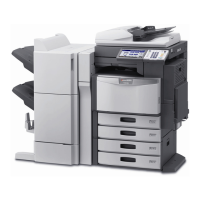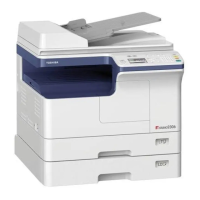2.HOW TO MAKE COPIES
Placing Originals 25
2 HOW TO MAKE COPIES
Using the RADF (Reversing Automatic Document Feeder, optional)
Precautions
Do not use the types of originals 1 to 8 shown below because such originals may cause misfeeding or damage to the
equipment.
1. Badly wrinkled, folded or curled originals
2. Originals with carbon paper
3. Taped, pasted or cut-out originals
4. Clipped or stapled originals
5. Originals with holes or tears
6. Damp originals
7. OHP films or tracing paper
8. Coated paper (with wax, etc.)
Use the types of originals 9 and 10 shown below with extra care.
9. Originals which resist sliding with the fingers, or surface-treated originals (The sheets of such originals may not be
separated.)
10. Folded or curled originals (They should be fully smoothed out before being used.)
When black streaks appear
If the scanning area or the guide area is dirty, image trouble such as black streaks may occur on printouts. Weekly
cleaning of these areas is recommended. For cleaning, refer to the Quick Start Guide.
132
5
6
78
4
9
10

